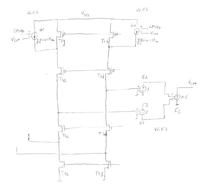Ravinder487
Full Member level 3
- Joined
- Jul 9, 2010
- Messages
- 169
- Helped
- 0
- Reputation
- 0
- Reaction score
- 0
- Trophy points
- 1,296
- Location
- Bangalore, India
- Activity points
- 2,469
Hi all,
As I understand CMFB is used to fix the output nodes at some fixed voltage even in presence of any mismatches between two wings of differential amplifier.
If this is true while simulating a basic differential amplifier we don't consider any mismatches,so is there any need to include CMFB (at least for simulation sake).
As I understand CMFB is used to fix the output nodes at some fixed voltage even in presence of any mismatches between two wings of differential amplifier.
If this is true while simulating a basic differential amplifier we don't consider any mismatches,so is there any need to include CMFB (at least for simulation sake).
